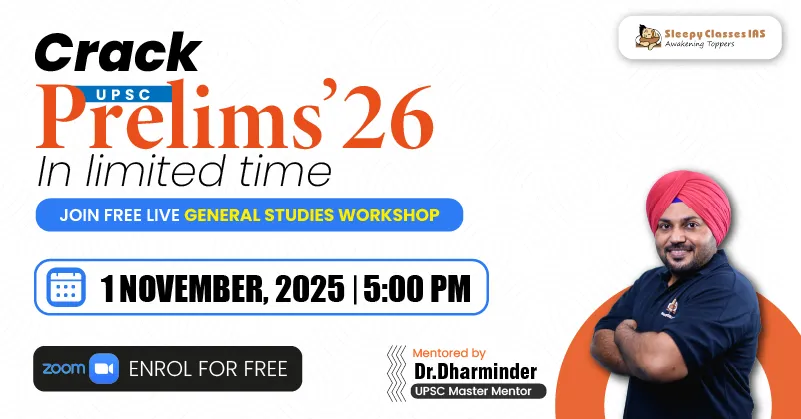Question 1
International Relations | SAARC | Easy | Indian Express
SOURCE
Consider the following with respect to South-Asian Free Trade Area:
1. The free trade arrangement of the South Asian Association for Regional Cooperation.
2. The agreement came into force in 2006.
Which of the statements above is or are correct?
A. 1 only
B. 2 only
C. Both 1 and 2
D. None of the above
Solution & Detailed Explanation
Answer: (C) Both 1 and 2
Detailed Explanation
- The South Asian Free Trade Area (SAFTA) is the free trade arrangement of the South Asian Association for Regional Cooperation (SAARC).
- The agreement came into force in 2006, succeeding the 1993 SAARC Preferential Trading Arrangement.
- SAFTA signatory countries are Afghanistan, Bangladesh, Bhutan, India, Maldives, Nepal, Pakistan and Sri Lanka.
- HQs- Kathmandu, Nepal
Question 2
International Relations | Maps - Places in News | Easy | Indian Express
SOURCE
Which of the following countries does not border Afghanistan:
A. China
B. Kyrgyzstan
C. Uzbekistan
D. Tajikistan
Solution & Detailed Explanation
Answer: (B) Kyrgyzstan
Detailed Explanation
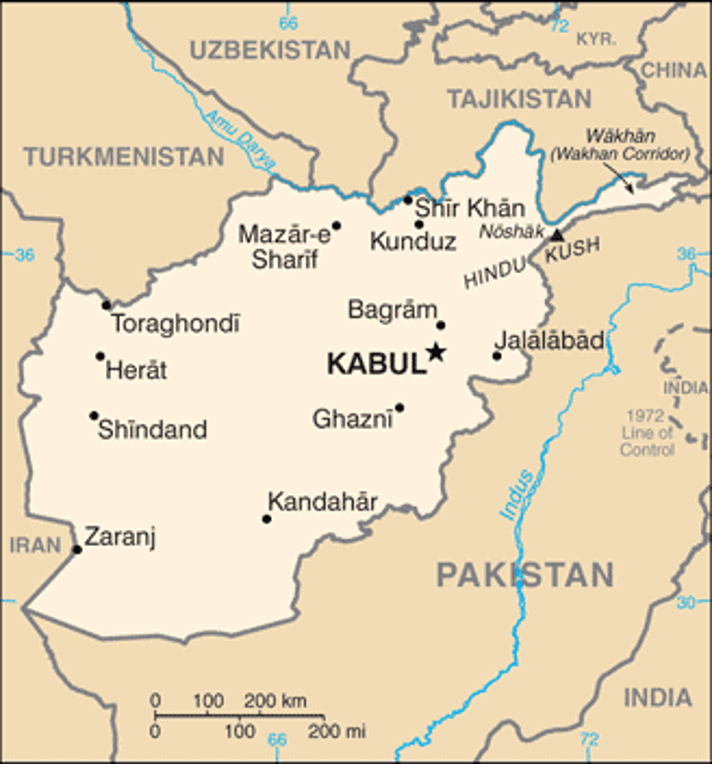
Question 3
International Relations | Conventions | Medium | Indian Express
SOURCE
Consider the following statements:
1. The Ottawa Convention was concluded by the Diplomatic Conference on an International Total Ban on anti-personnel and anti-vehicle mines.
2. Ottawa Convention came into force in the year 1999.
Which of the statements above is or are correct?
A. 1 only
B. 2 only
C. Both 1 and 2
D. None of the above
Solution & Detailed Explanation
Answer: (B) 2 only
Detailed Explanation
- The Convention was concluded by the Diplomatic Conference on an International Total Ban on Anti-Personnel Land Mines at Oslo on 18 September 1997.
- In accordance with its article 15, the Convention was opened for signature at Ottawa, Canada, by all States from 3 December 1997 until 4 December 1997, and remained open thereafter at the United Nations Headquarters in New York until its entry into force on 1 March 1999.
- Landmines come predominantly in two varieties: anti-personnel and anti-vehicle mines. Both have caused great suffering in the past decades and continue to kill and injure civilians and by-standers long after conflicts have ended.
- Anti-personnel mines are prohibited under the Ottawa Convention.
Question 4
Polity | Making of Indian Constitution | Medium | Indian Express
SOURCE
Consider the following pairs (Features of Indian Constitution and Borrowed from which country)
Ideals of Justice – Japan
Rajya Sabha Members Nominations – USSR
Procedure established by law – Ireland
How many pairs are correctly matched?
A. Only one
B. Only two
C. All three
D. None of the above
Solution & Detailed Explanation
Answer: (D) None of the above
Detailed Explanation
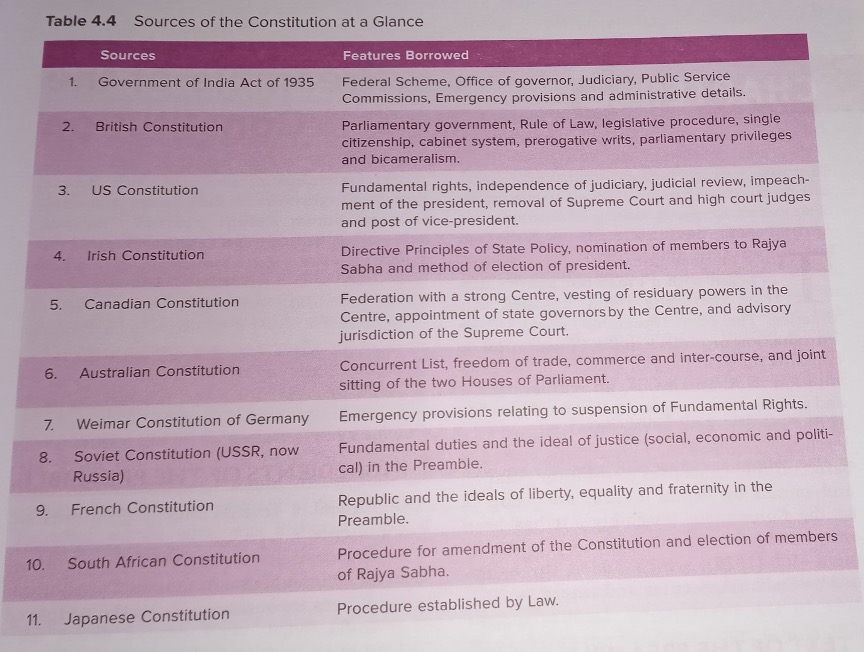
Question 5
Environment | Agriculture | Medium | Indian Express
SOURCE
Consider the following with respect to NPK fertilisers:
1. The NPK are micro-nutrients which the crops require for development.
2. The ideal NPK ratio for the development of crops is 4:1:2.
Which of the statements above is or are correct?
A. 1 only
B. 2 only
C. Both 1 and 2
D. None of the above
Solution & Detailed Explanation
Answer: (D) None of the above
Detailed Explanation
- NPK (Nitrogen, Phosphorus, and Potassium) are macronutrients, not micronutrients, and they are essential for plant growth and development. Micronutrients, like zinc, iron, and boron, are also important but needed in smaller quantities.
- A NPK ratio of 4:2:1 (N:P2O5:K2O) is generally considered ideal and accepted for macro-level monitoring of consumption of plant nutrients for the country as a whole.
Question 6
Science and Technology | Technology | Medium | Indian Express
SOURCE
Consider the following with respect to Global Positioning System:
1. The GPS located a person using trilateration.
2. Coronal mass ejections and solar flares can disrupt the working of GPS.
Which of the statements above is or are correct?
A. 1 only
B. 2 only
C. Both 1 and 2
D. None of the above
Solution & Detailed Explanation
Answer: (C) Both 1 and 2
Detailed Explanation
- GPS devices use trilateration to determine a user’s location. Trilateration involves calculating a position by measuring the distances from multiple known points (satellites) to an unknown point (the GPS receiver). By determining the distances from at least three satellites, a GPS receiver can pinpoint its location on Earth.
- Coronal mass ejections (CMEs) and solar flares can indeed disrupt the operation of GPS (Global Positioning System). These space weather events release large amounts of radiation and charged particles that can interfere with the signals transmitted between GPS satellites and ground-based receivers.
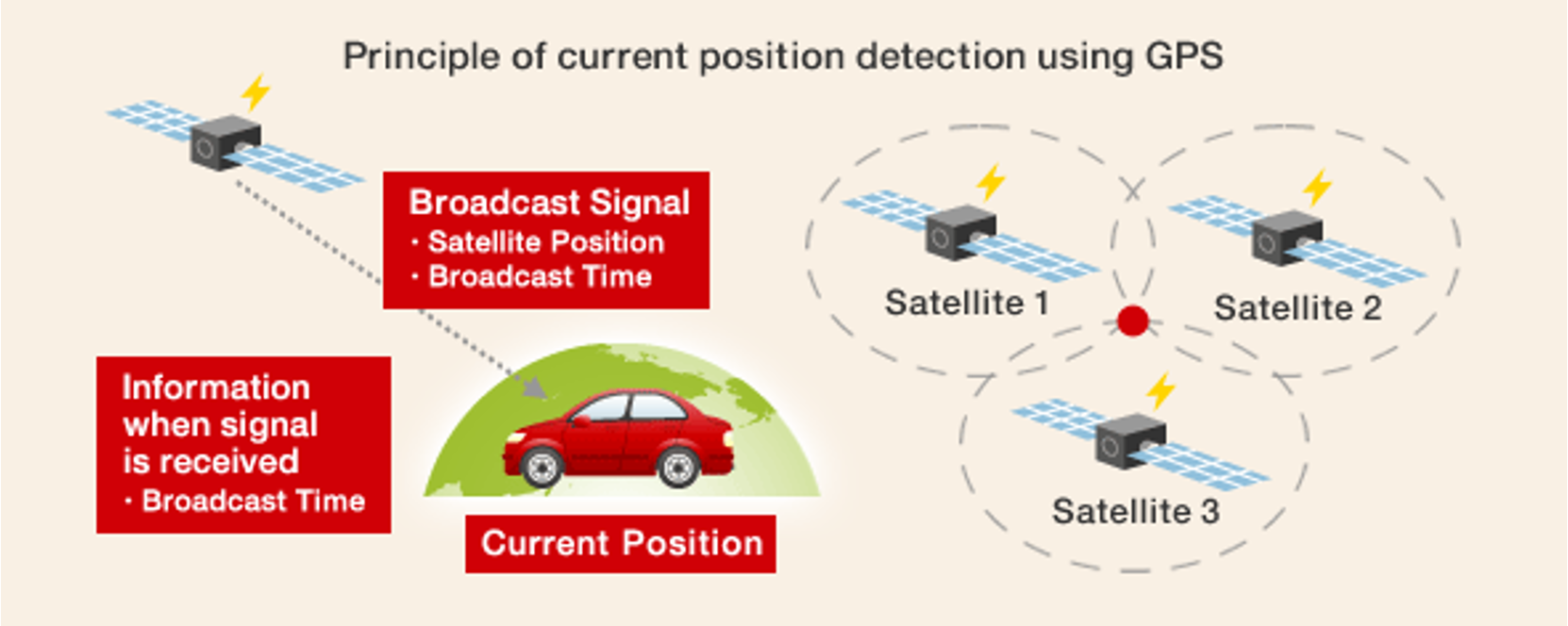
Question 7
Polity | Constitution | Medium | The Hindu
SOURCE
Consider the following:
1. The reserved areas for the STs are notified in the fifth schedule.
2. Chamba area under HP is fully reserved for the STs.
Which of the statements above is or are correct?
A. 1 only
B. 2 only
C. Both 1 and 2
D. None of the above
Solution & Detailed Explanation
Answer: (C) Both 1 and 2
Detailed Explanation
- The administration and control of Scheduled Areas and Scheduled Tribes are governed by the Fifth Schedule of the Indian Constitution. Specifically, Article 244(1) of the Constitution read with the Fifth Schedule, outlines the provisions for these areas. These areas are primarily located in ten states: Andhra Pradesh, Telangana, Odisha, Jharkhand, Chhattisgarh, Madhya Pradesh, Rajasthan, Gujarat, Maharashtra and Himachal Pradesh.
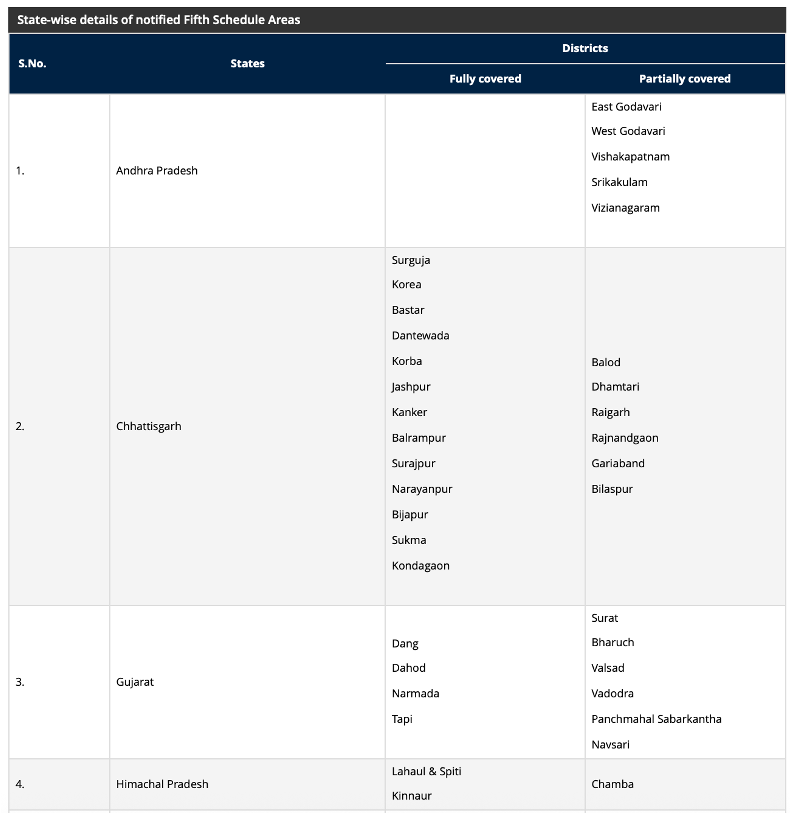
Question 8
Polity | Constitution | Medium | The Hindu
SOURCE
Consider the following pairs: (PVTGs and state)
Kolam – Maharashtra
Bondo – Rajasthan
Sahariya – Odisha
How many pairs are correctly matched?
A. Only one
B. Only two
C. All three
D. None of the above
Solution & Detailed Explanation
Answer: (A) Only one
Detailed Explanation
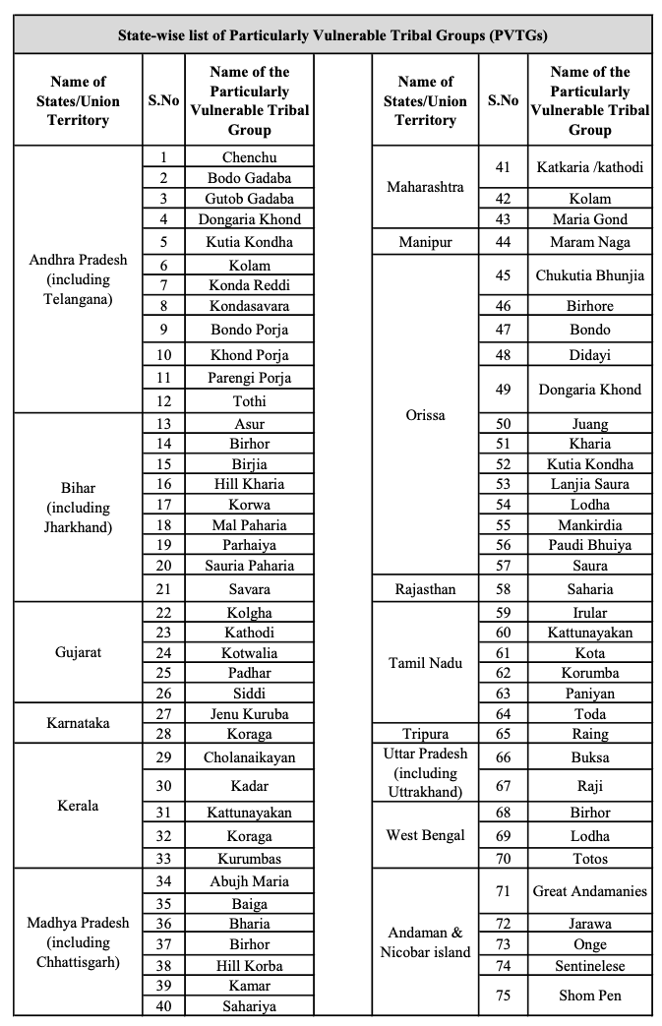
Question 9
Environment | Conservation | Easy | The Hindu
SOURCE
Consider the following pairs: (Tiger reserves and States)
Manas – Assam
Melghat – Maharashtra
Indravati – Chattisgarh
How many pairs are correctly matched?
A. Only one
B. Only two
C. All three
D. None of the above
Solution & Detailed Explanation
Answer: (C) All three
Detailed Explanation
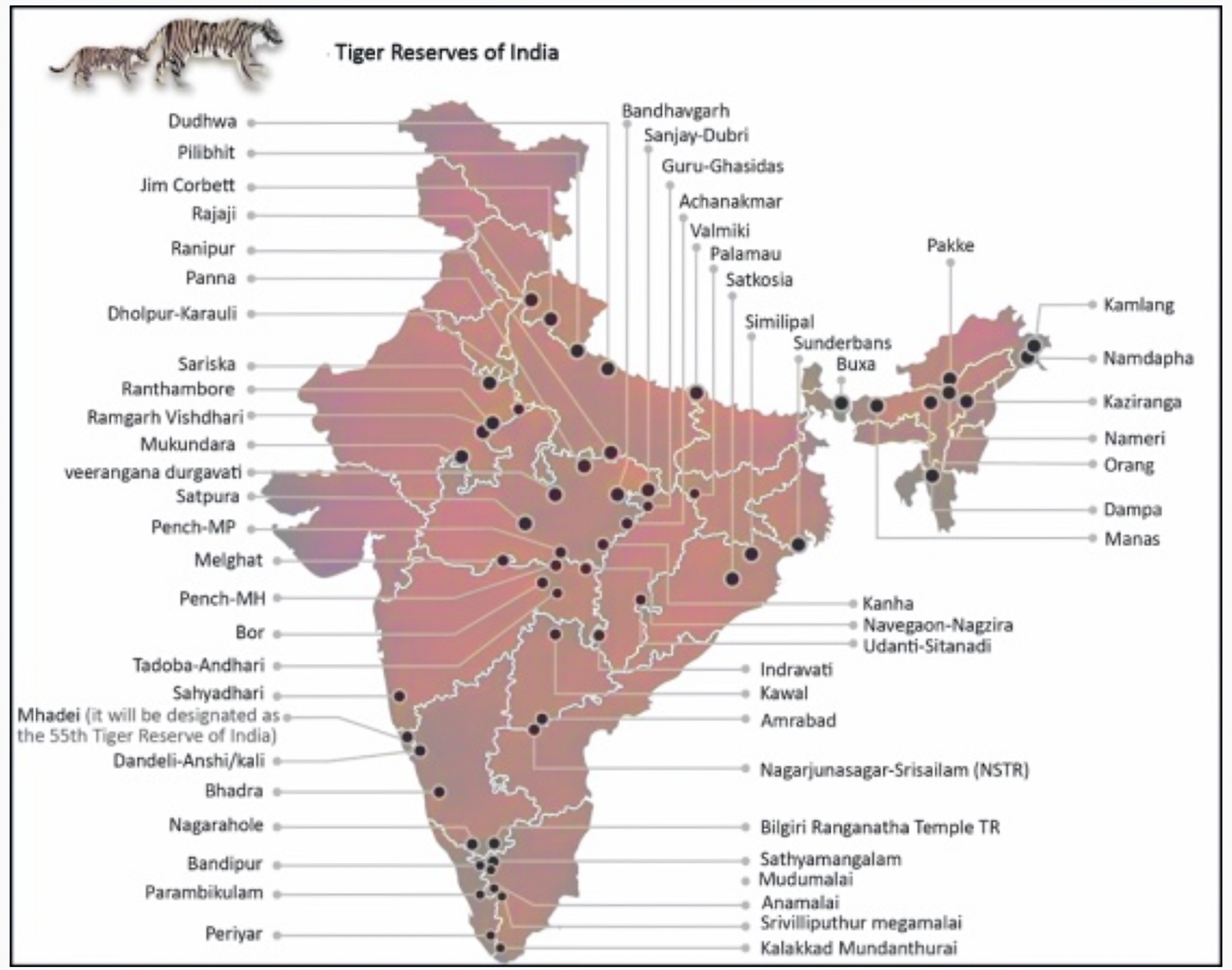
Question 10
Environment | Climate Change | Medium | The Hindu
SOURCE
Consider the following with respect to EVs:
1. EVs are heavier than the conventional vehicles.
2. EVs produce particulate matter as a pollutant.
Which of the statements above is or are correct?
A. 1 only
B. 2 only
C. Both 1 and 2
D. None of the above
Solution & Detailed Explanation
Answer: (C) Both 1 and 2
Detailed Explanation
- Electric cars are heavier than traditional petrol or diesel cars due to their large battery packs. These battery packs weigh around 450kg on average and make up as much as 25% of the car’s total weight.
- Electric vehicles (EVs) can contribute to particulate matter (PM) pollution, primarily through tire and brake wear, even though they eliminate tailpipe emissions. While EVs don’t produce PM from exhaust like gasoline or diesel cars, their heavier weight can lead to increased tire wear and brake dust, releasing PM into the atmosphere.





